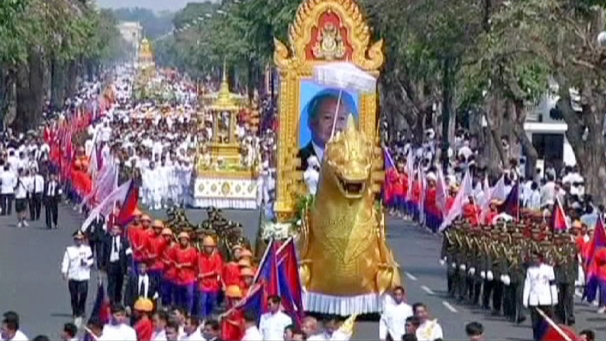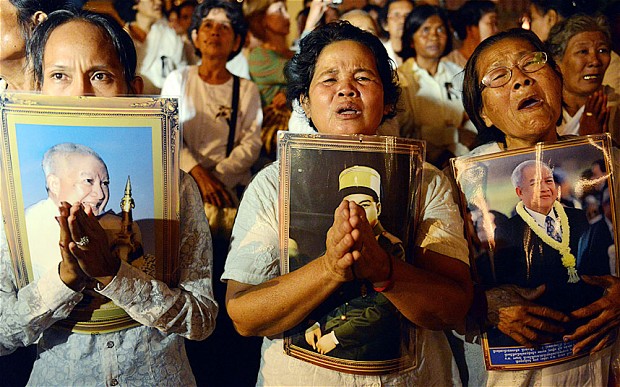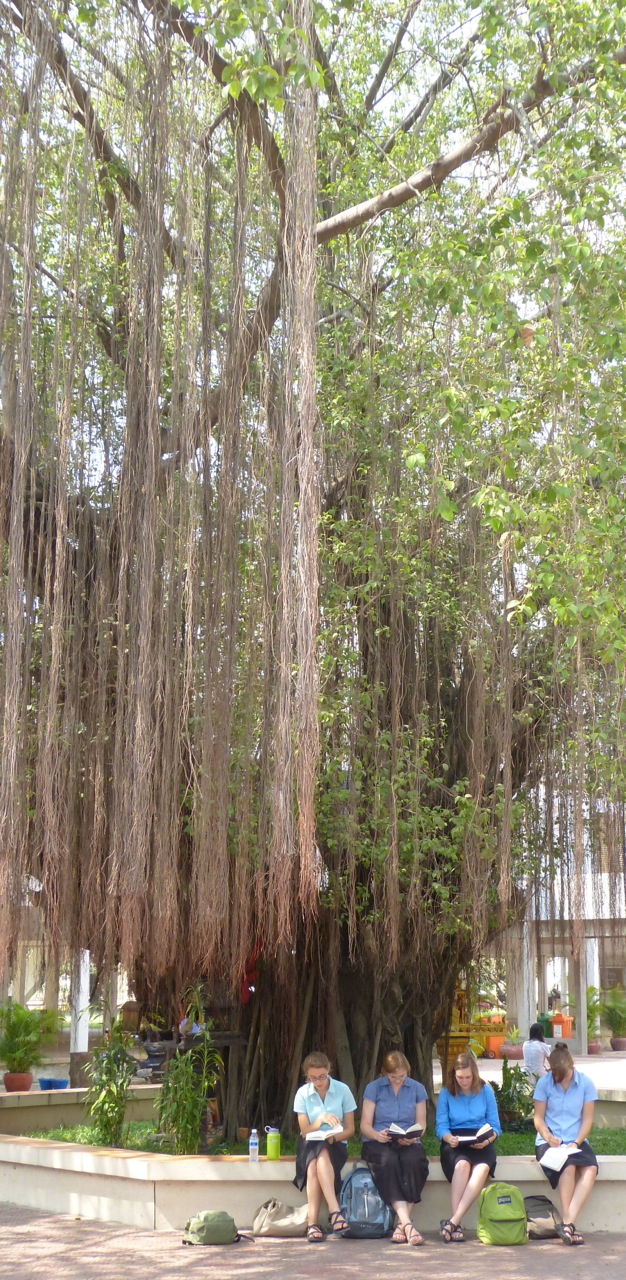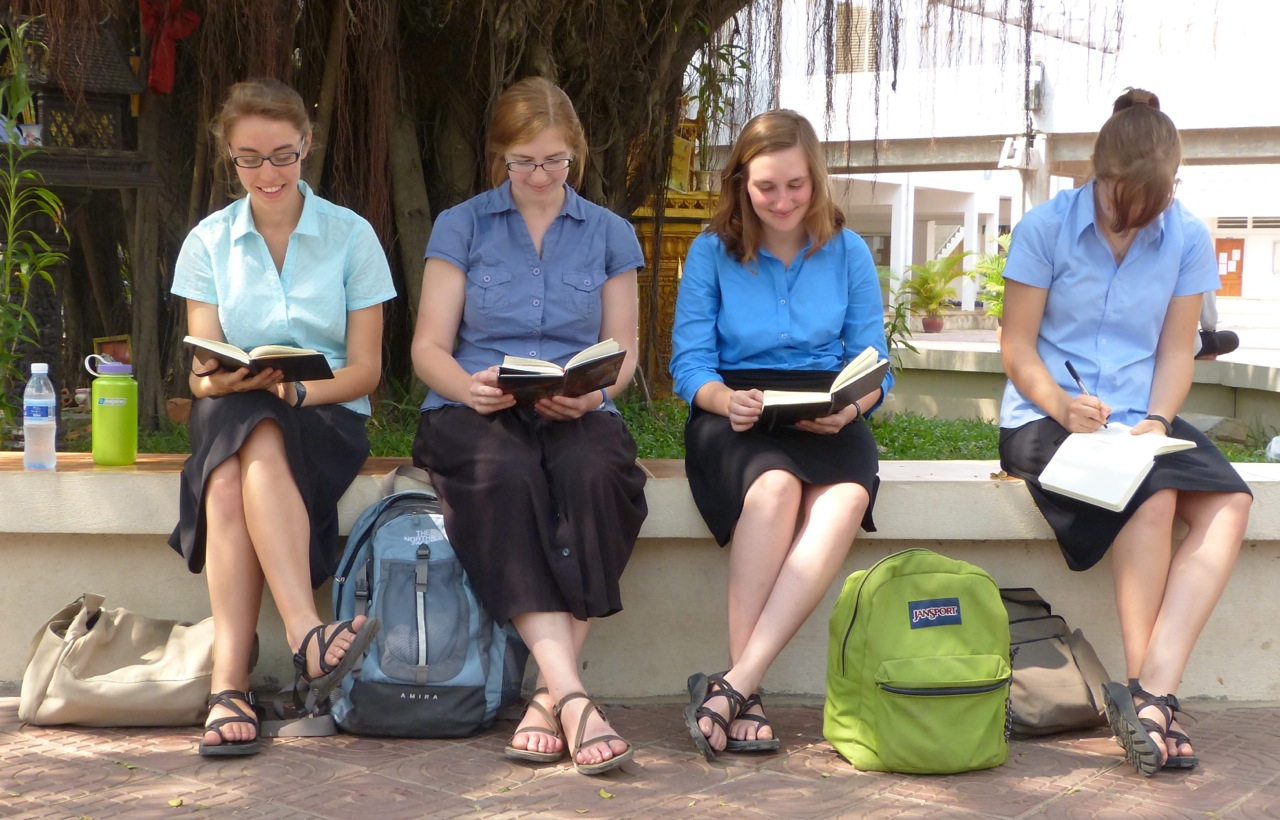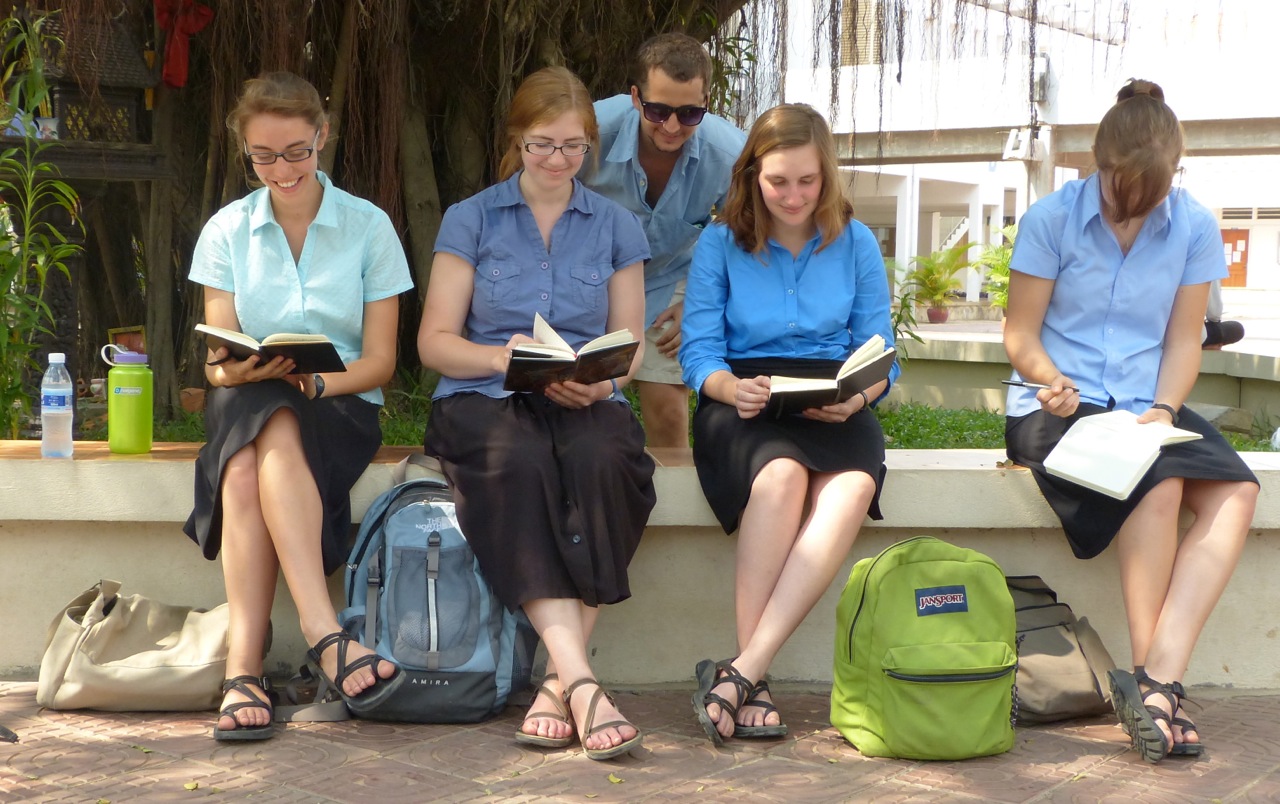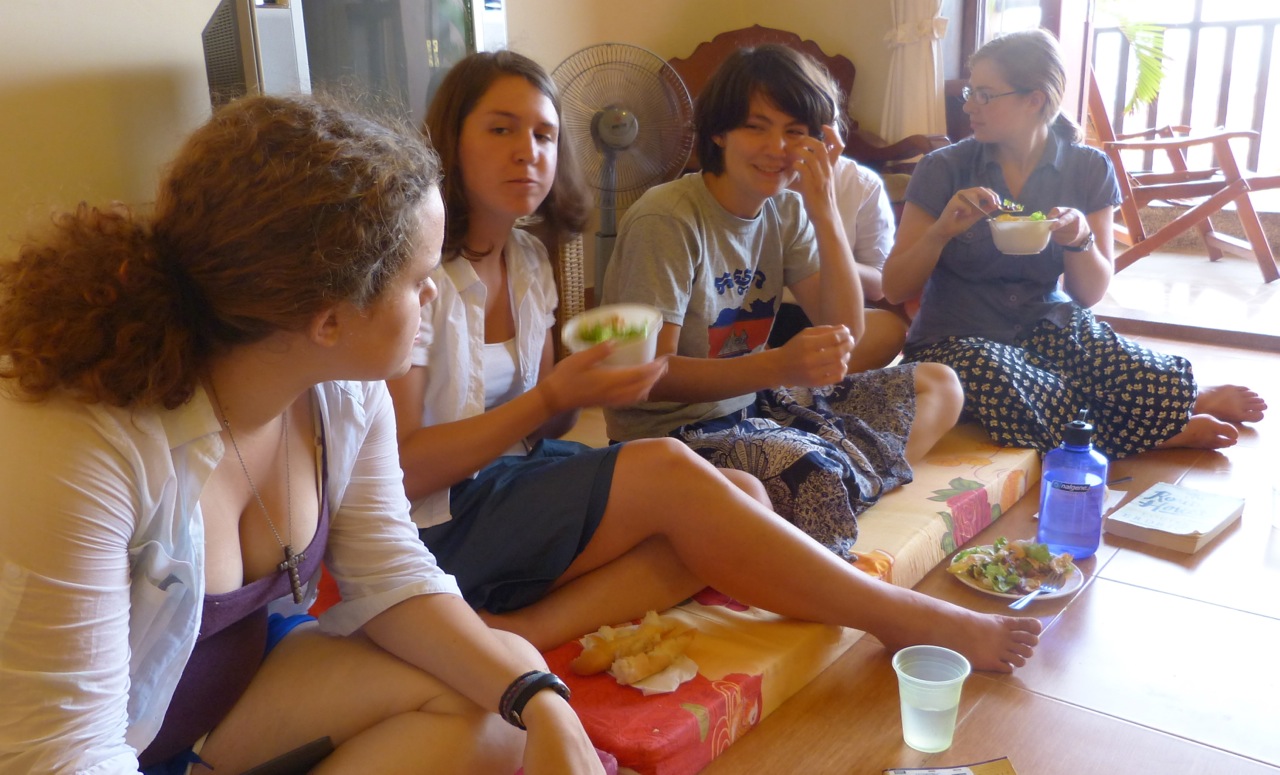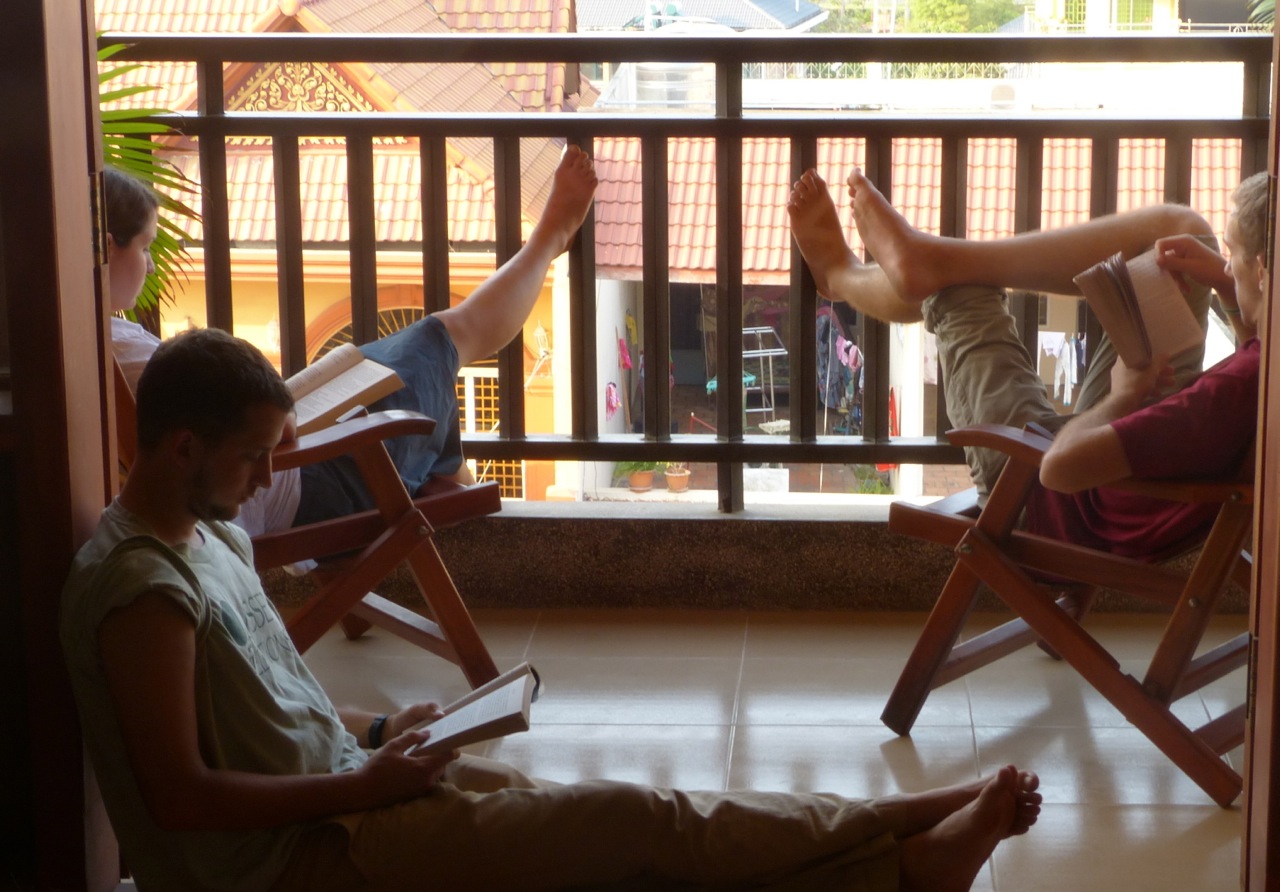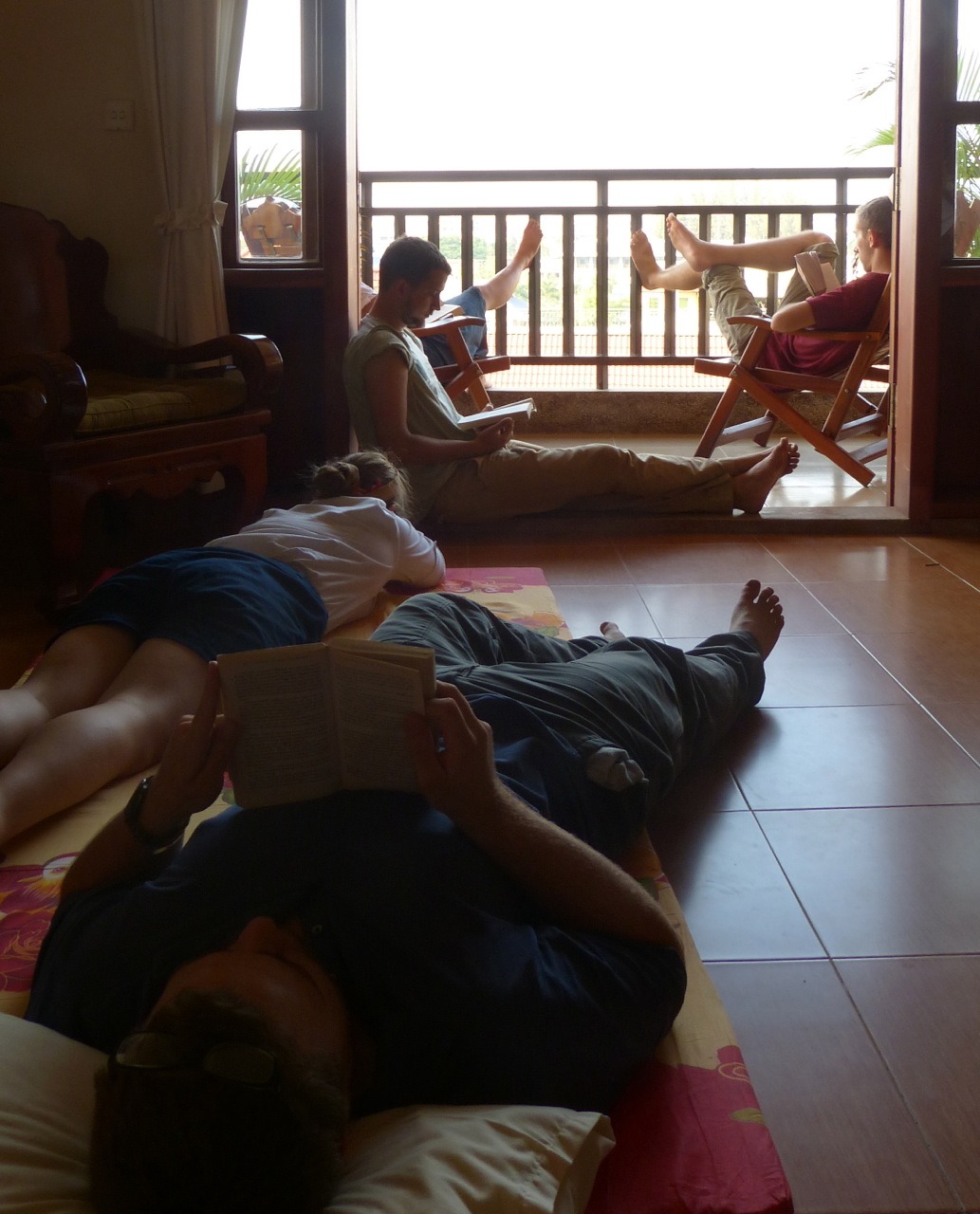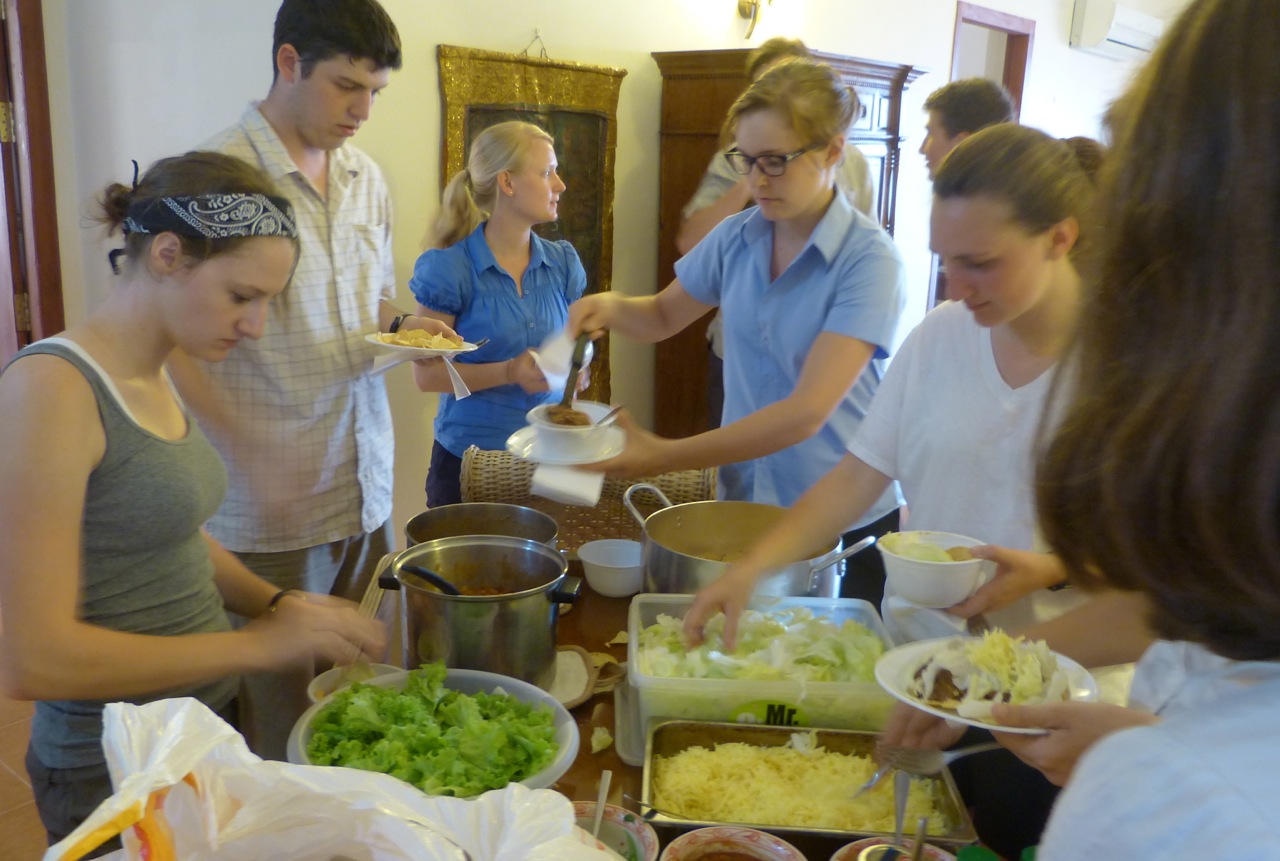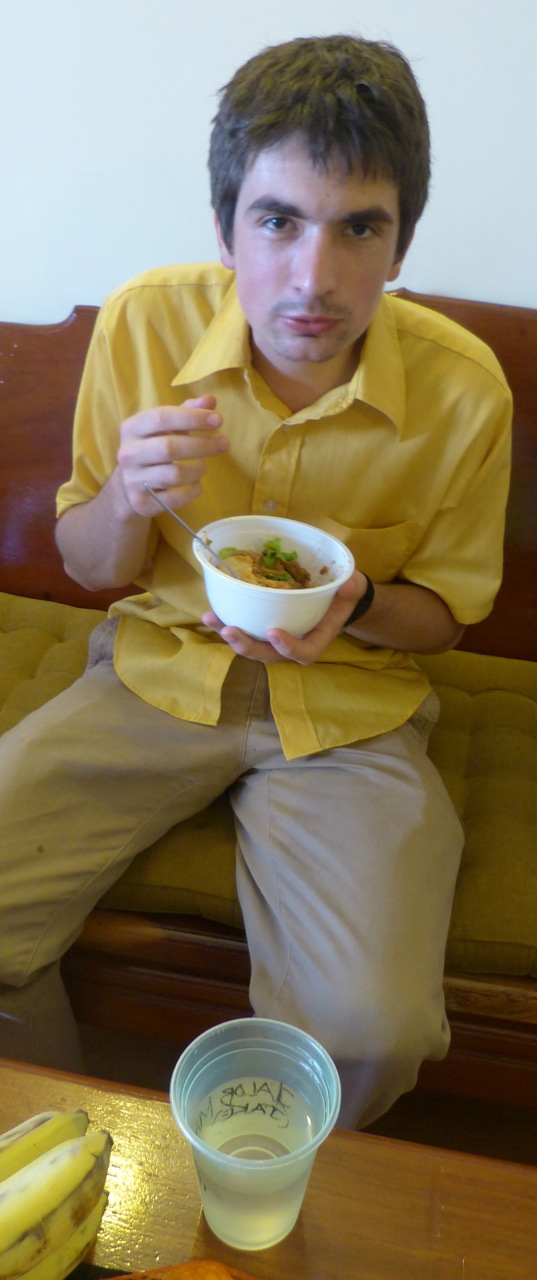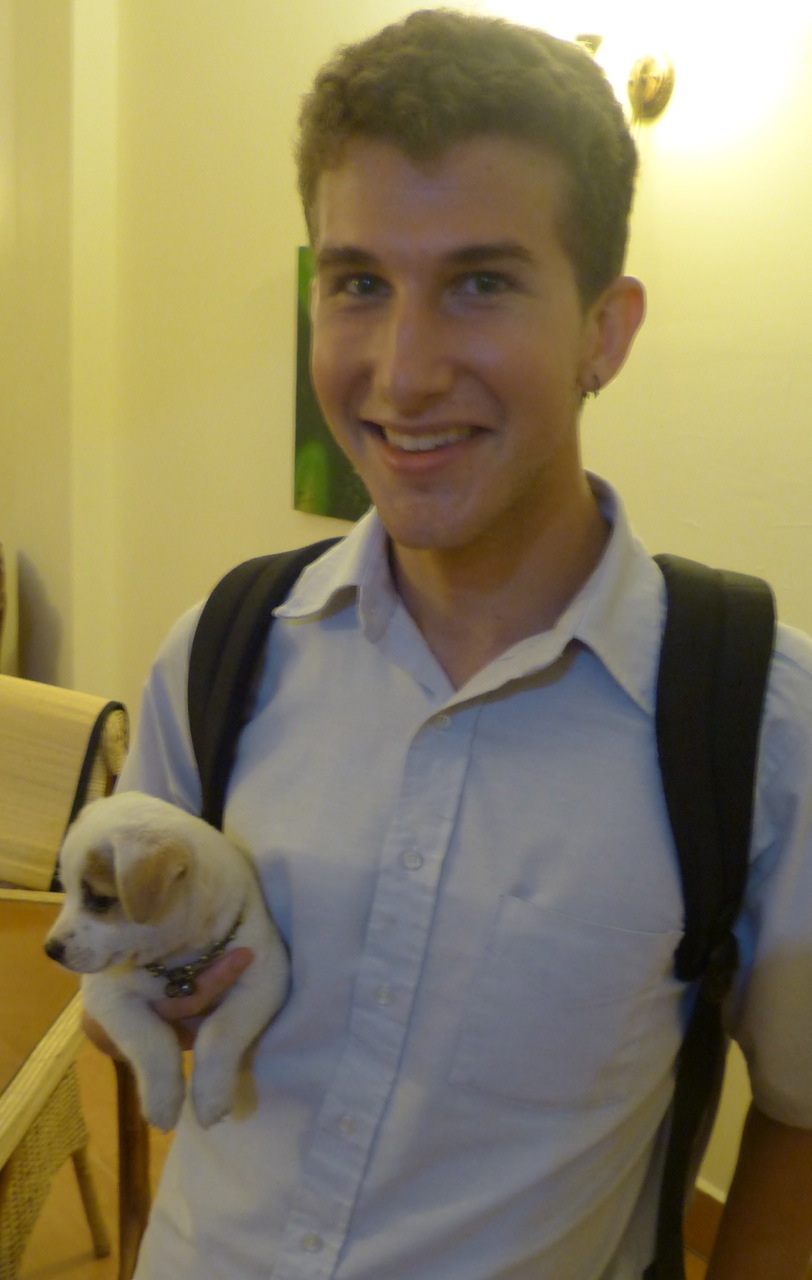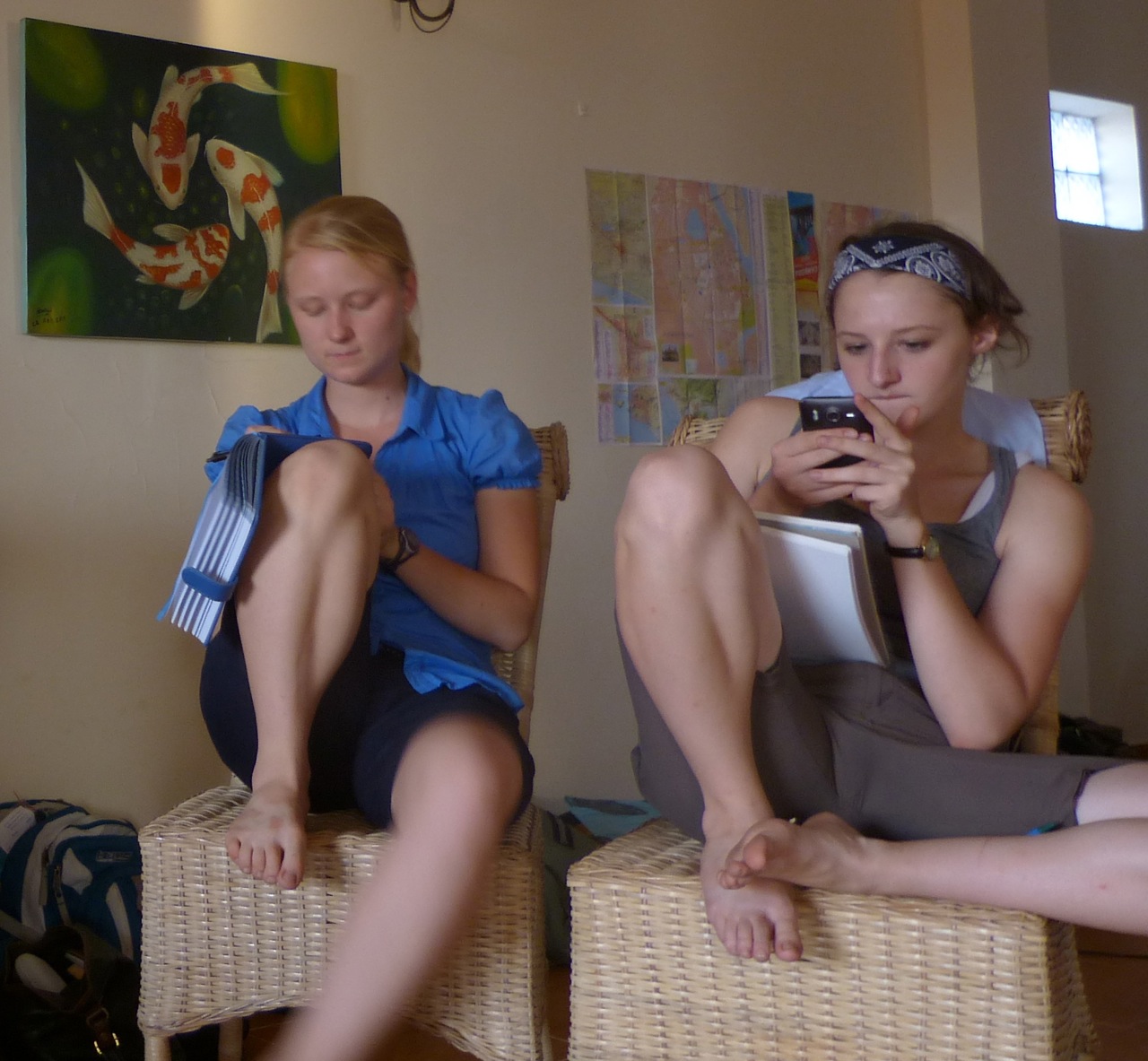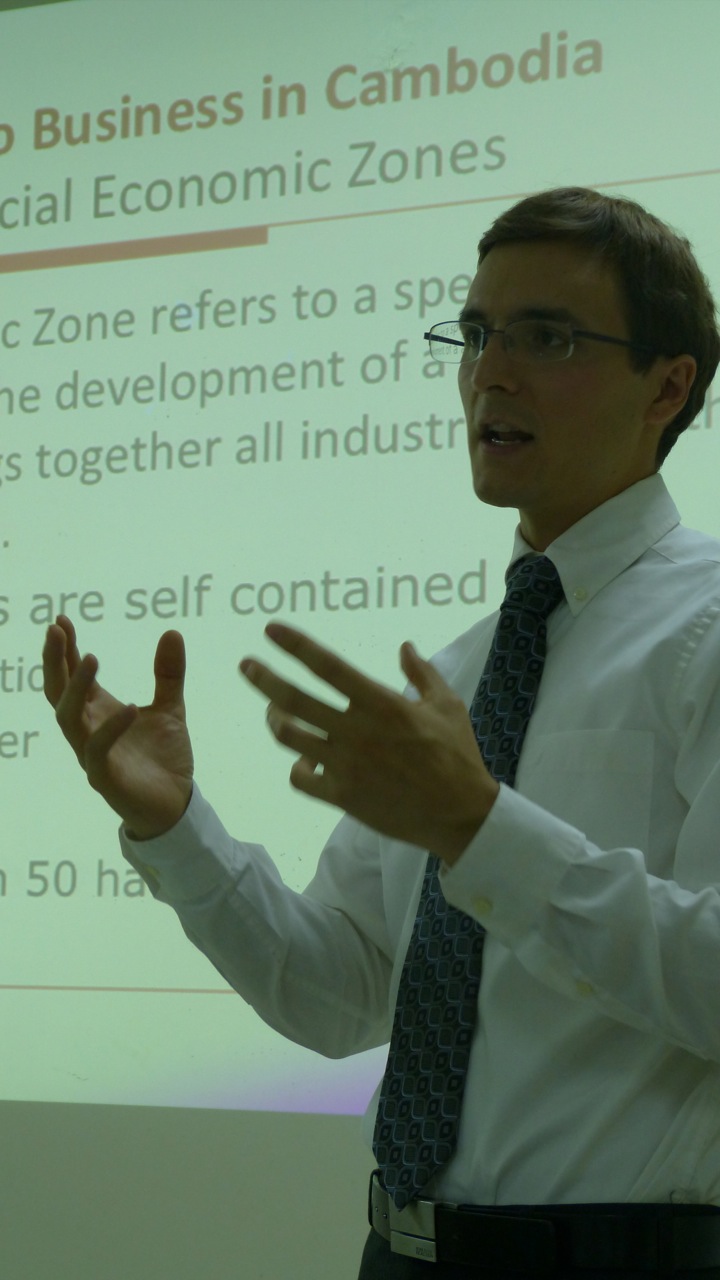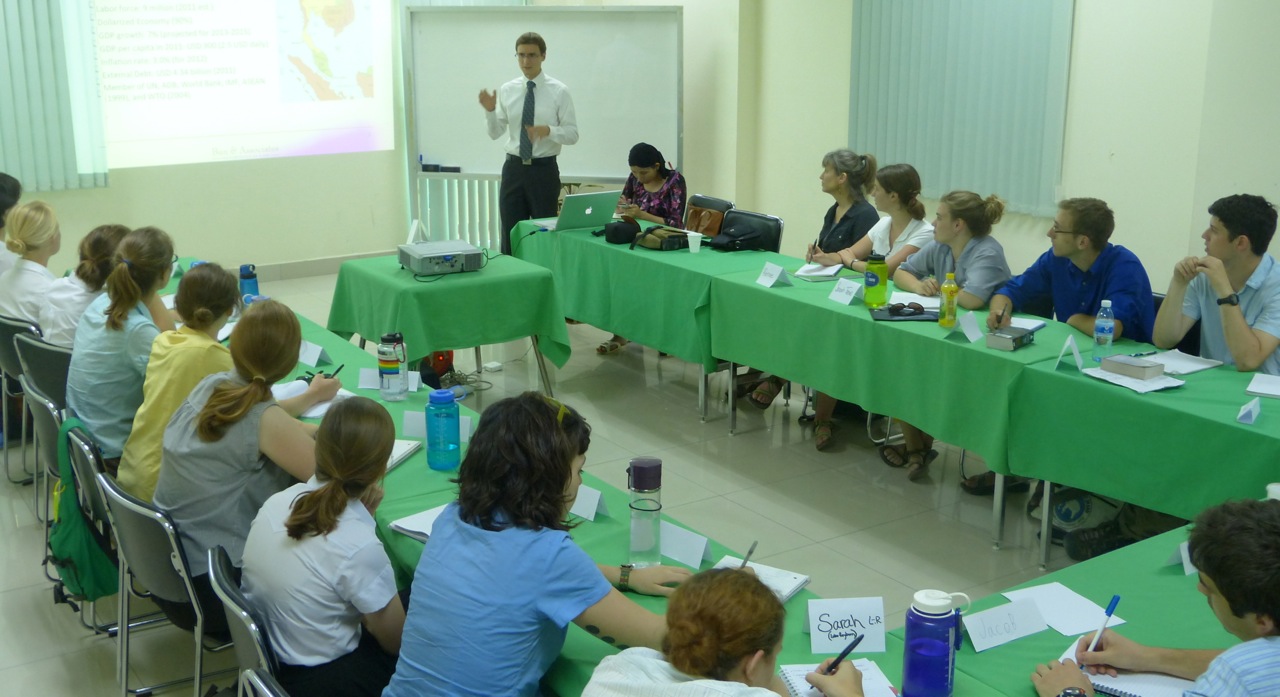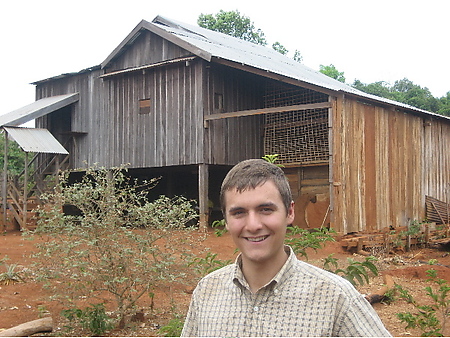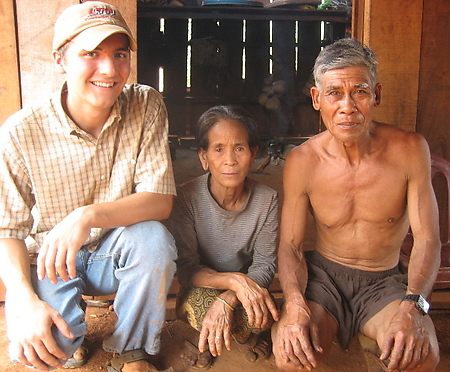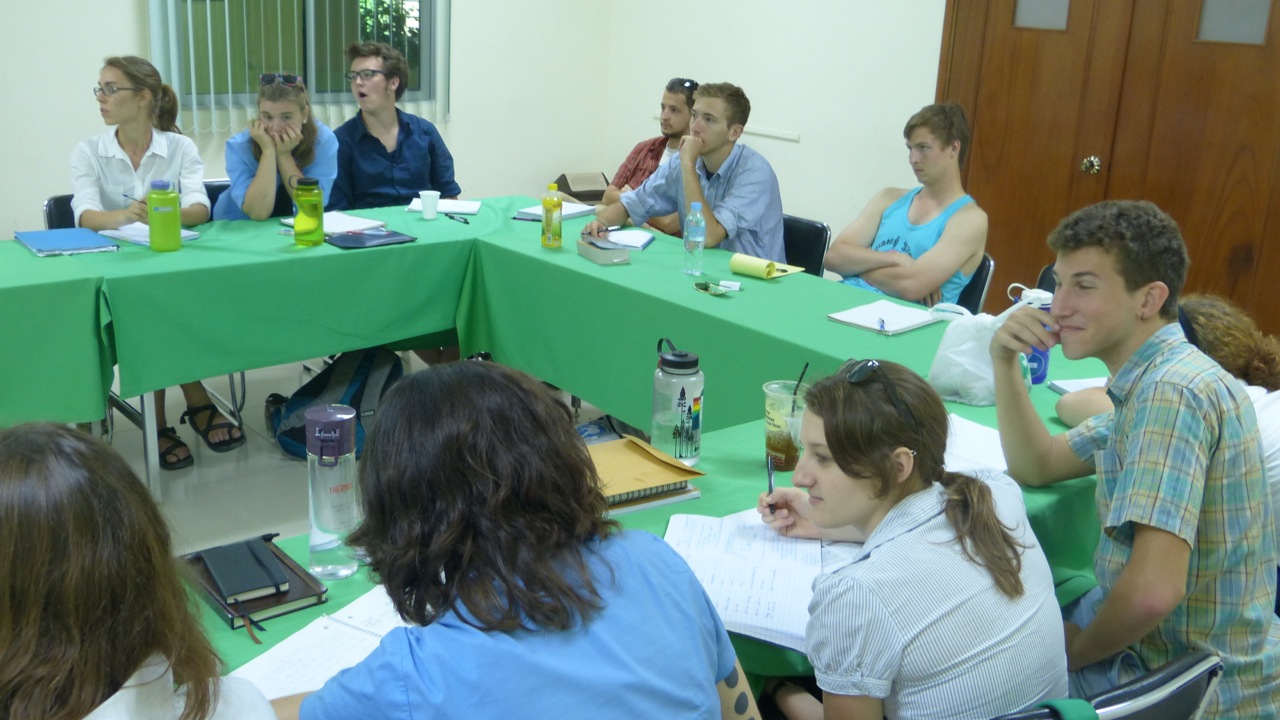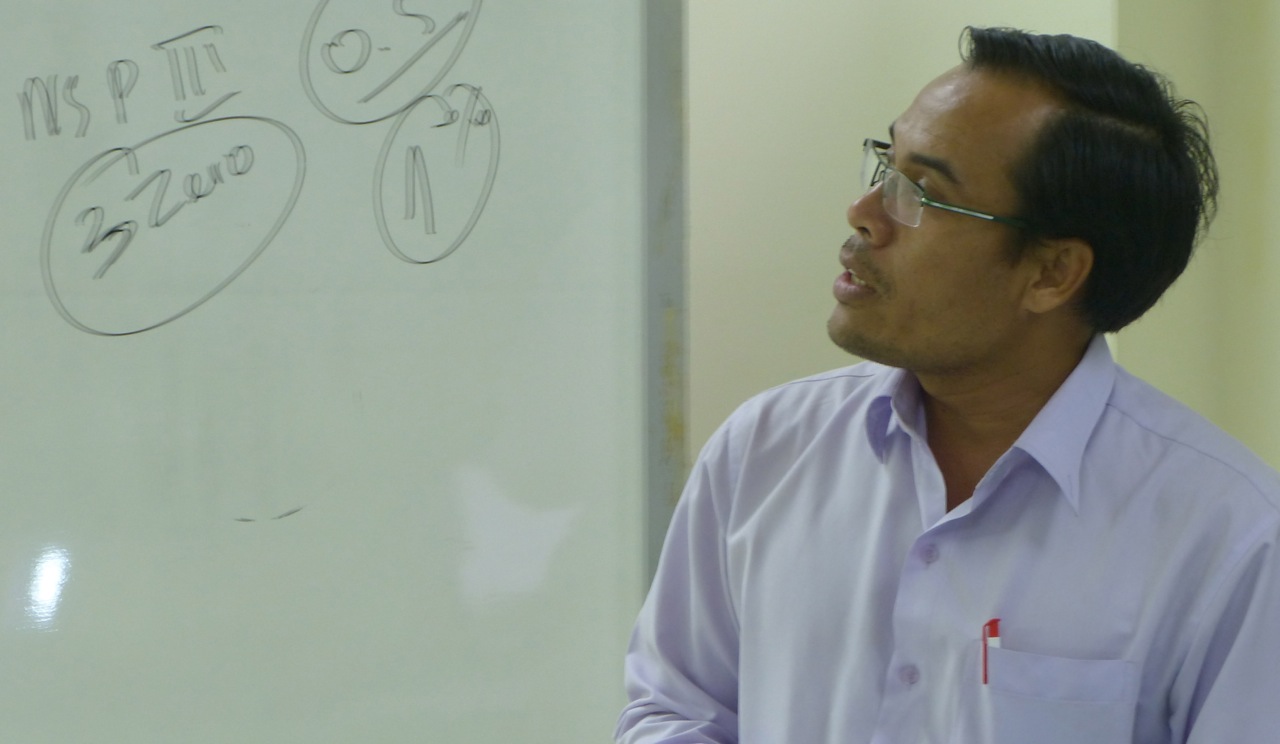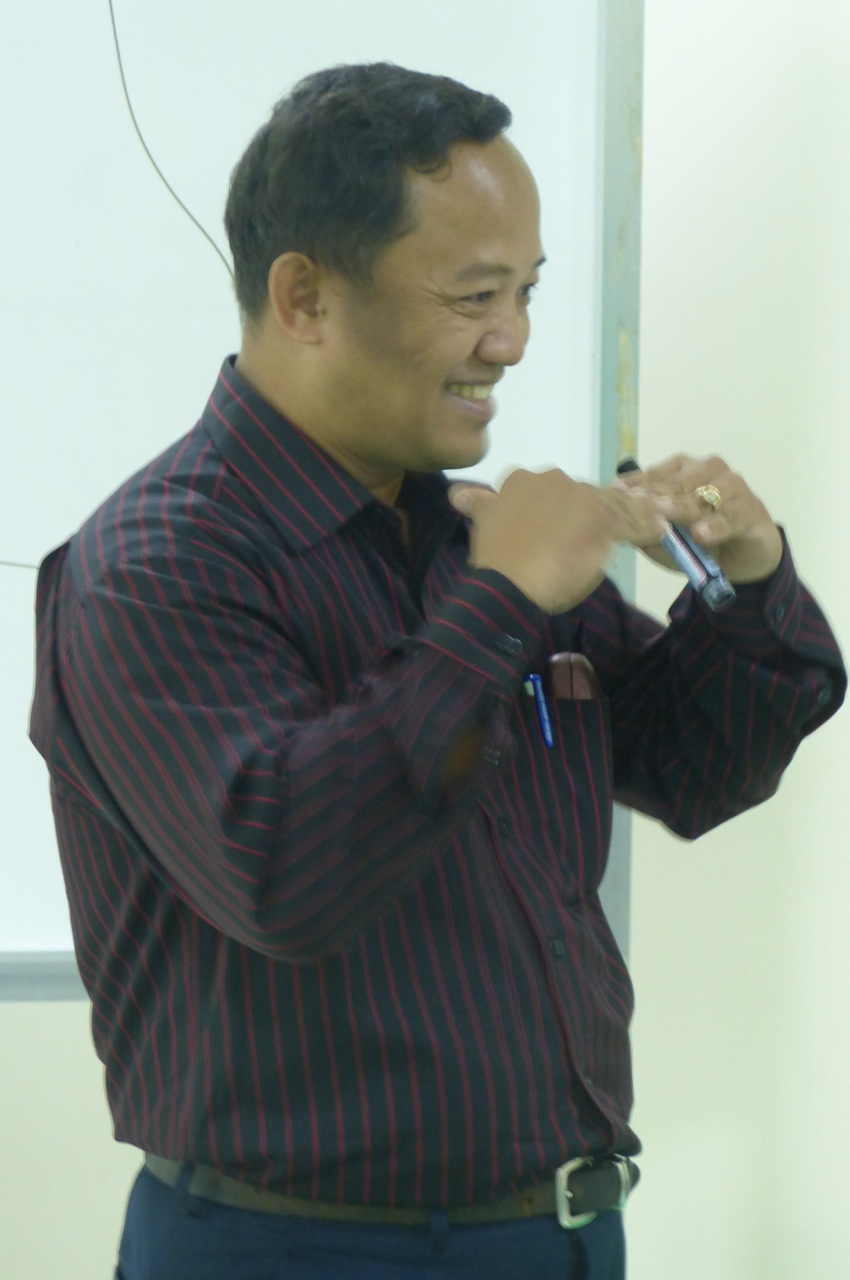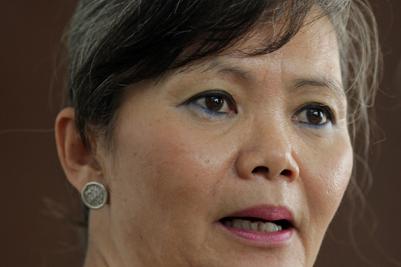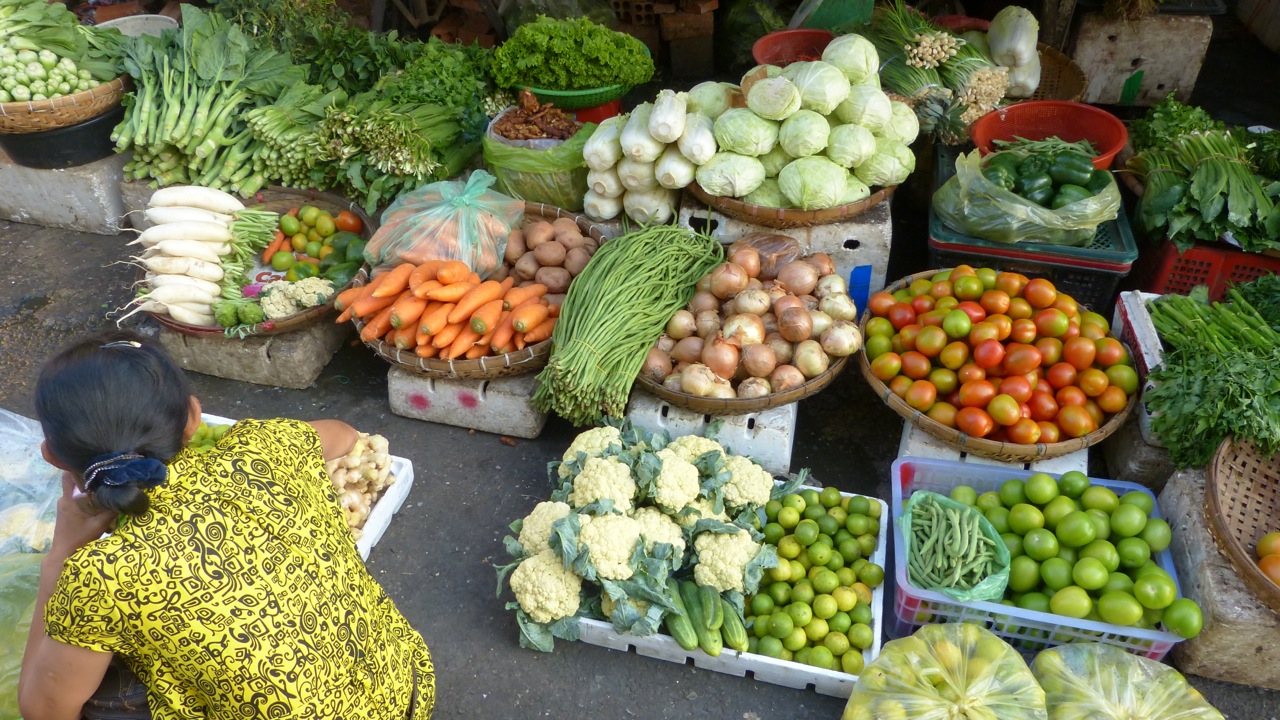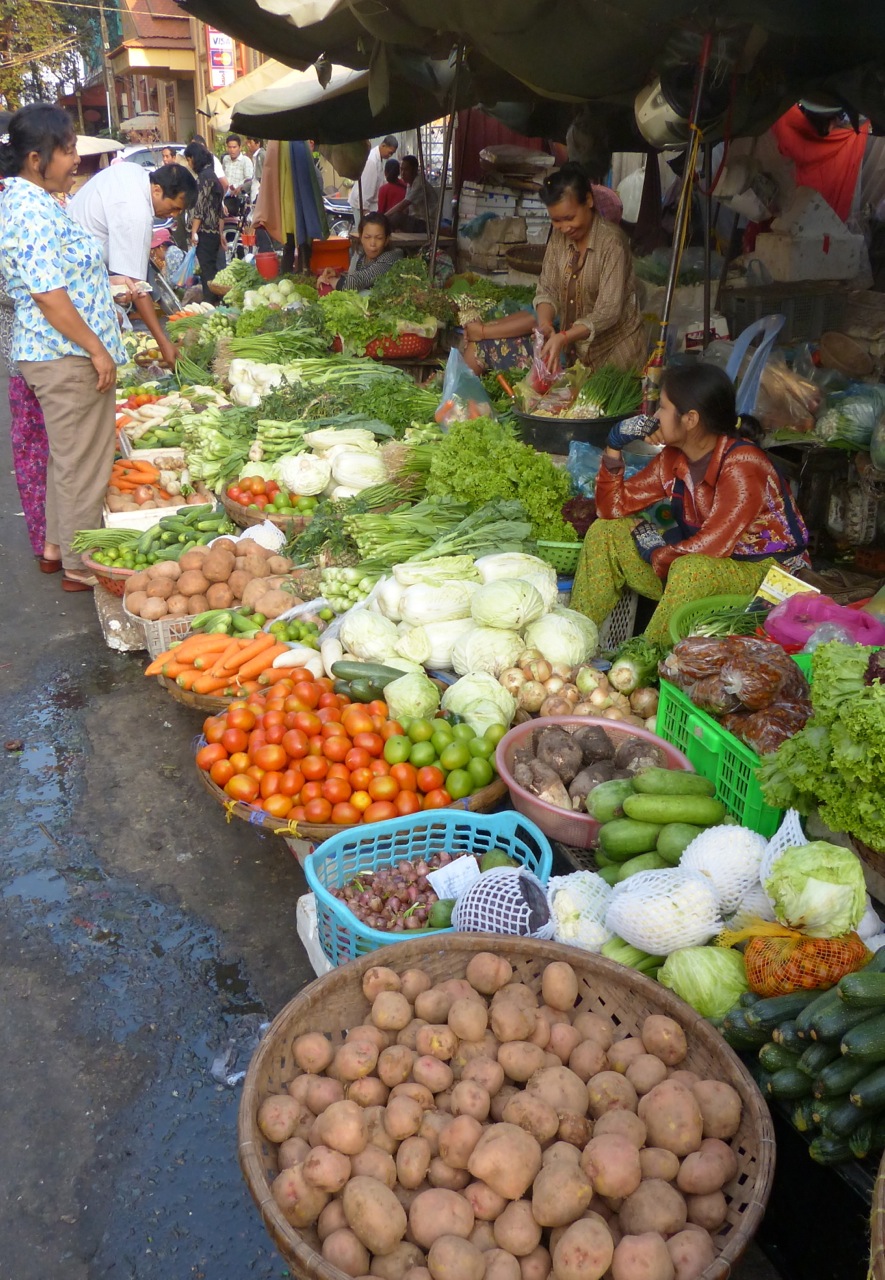Life around Phnom Penh

In addition to the stimulating weekend trip to Siem Reap (please see the three entries posted 24 hours ago on Angkor Wat, Kampong Phluck, and Skuon), our larger week has been full with more routine and once-in-a-lifetime activities in Phnom Penh. The big event in Phnom Penh over the last five days has been the funeral for the King Father, Norodom Sihanouk, credited with gaining Cambodia’s independence from the French Protectorate and considered the father of the country. Sihanouk, 89, died in Beijing in October, and the mourning for him has continued since that time, with formal rites taking place continuously since Friday. Last evening he was cremated in a magnificent ceremony with visiting dignitaries from all over the world. Several photos here — taken by others since the public was not able to attend the ceremonies — are shown first in this blog.
More routinely, students continue their every-morning Khmer language study at the Royal University of Phnom Penh and their afternoon lectures on Cambodian history, culture, politics, arts, and economics. We also have P’teah Goshen nights each week, so last week’s Tuesday night gathering, where we had taco salad, is depicted here.
We’ve also had a series of memorable lectures. One was by Dustin Combs, a U.S.-trained lawyer now working for Bun and Associates. What was unique about this lecture — and it is a Cambodia SST First if not an SST First — was that Dustin was also a student in the 2007 Cambodia SST group. After graduating from Goshen College, he went on to law school, and when he was applying for positions, his Cambodian SST experience landed him a position in Phnom Penh. His work is largely with major Asian and other companies wanting to invest in/move into Cambodia, and his lecture was helpful in understanding Cambodian business and economics. Dustin talked, in part, about why companies would want to move into Cambodia (an appropriate rate of inflation; a stable government; low cost for labor; central placement in the Association of Southeast Asian Nations; low tariffs; etc.). When Dustin was here in 2007, his service was in Ratanakiri Province, where he lived with an indigenous Kreung family (see photos).
Other lectures included input by Professor Diep Sophal on the Angkor temples, just prior to our departure for Siem Reap and Angkor Wat, and a lecture on HIV/AIDs in Cambodia by Dr. Kieng Vuthy.
We also were honored yesterday to hear from Her Excellency Mu Sochua, a member of the Cambodian parliament (equivalent to the U.S. House of Representatives). Ms. Sochua is referenced in most of the textbooks on recent Cambodian history, and is a leading woman politician in the opposition party — the Sam Rainsy Party — which has recently joined forces with the Human Rights Party to form the Cambodia National Rescue Party. Her lecture on moving people, especially women, from passivity through questioning consciousness to analytical consciousness and then to active critical consciousness was wonderful. Several Mennonite Central Committee volunteers and SST friends came to the lecture as well.
We have a full week of language classes and lectures this week, and then Saturday and Sunday we’ll take a two-day excursion to Kep and Rabbit Island on the south coast. Please be sure to read the other three new blog posts about Angkor Wat, Kampong Phluck, and Skuon as well.
